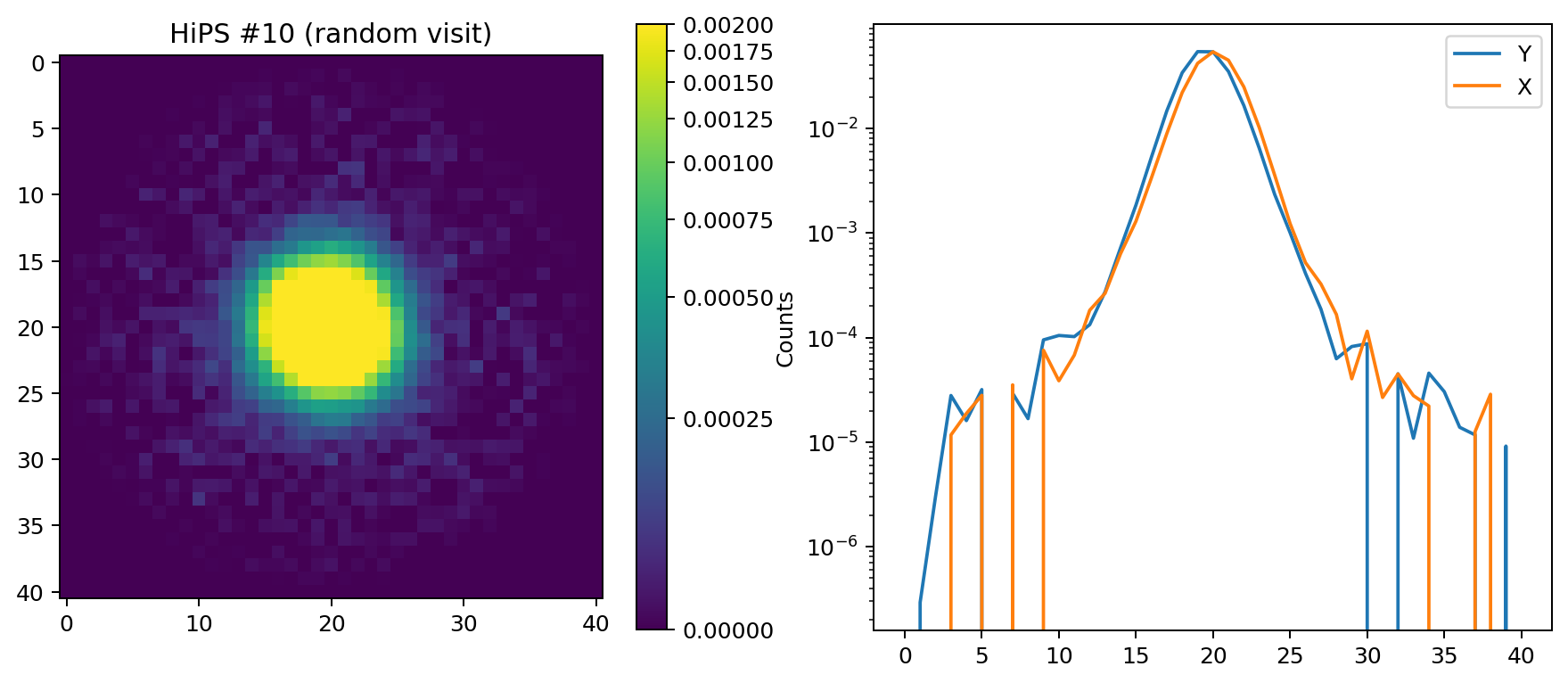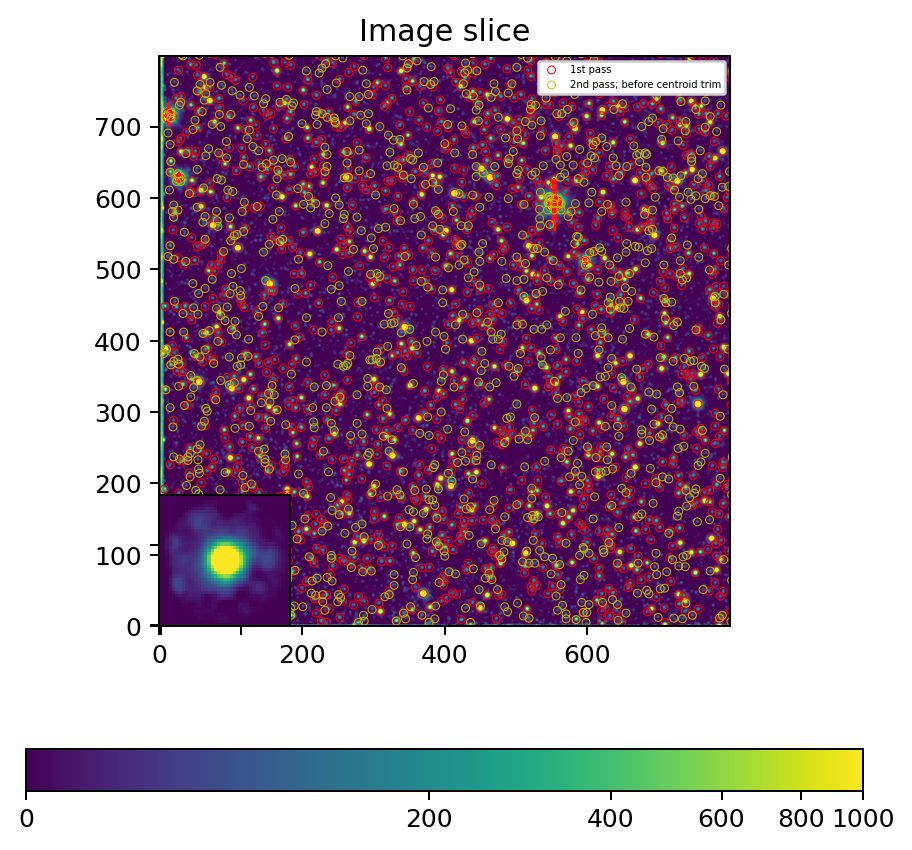Note
This technote is a work-in-progress.
1 Abstract¶
Summary of crowded field processing performance with the pipe_crowd prototype code.
2 Test cases¶
To test the performance of pipe_crowd, four datasets were chosen, with varying degree of crowding. Below is a brief description of these datasets from u/kherner/PREOPS-597_20220120.:
"instrument": "DECam", "visit":205419 High crowding
"instrument": "DECam", "visit":223501 Medium crowindg
"instrument": "DECam", "visit":428066 Low crowding
In addition to these three fields, we also select a high latitude field from the HiTS SN survey.:
"instrument": "DECam", "visit":288970 Control u/sullivan/DM-30831-HiTS2014-templates_test/20211011T191211Z
Below is the result of running pipe_crowd without any modifications to the code and using its default configuration.

Figure 1 Small region of the high crowding field (left; inset shows PSF model used), recontructed image (centre), and residuals (right). Pixels in red are masked.¶

Figure 2 Same for medium crowding field.¶

Figure 3 Same for low crowding field.¶

Figure 4 Same for control field.¶
3 Issues identified¶
Through successive runs of pipe_crowd using default parameters, the following issues were identified:
Poor performance in iterative source detection. Essentially, source detection in the residual images produce no additional sources.
PSF model has wings. Produces oversubtract residual images.
Centroid coordinates are NaN after first iteration
3.1 Testing PSF model performance¶
In the crowded fields the first potential issue identified was the presence of wings in the PSF model produced by ProcCCD/CharactrizeImage. Below we show two examples of PSF models for an medium crowded field and the control field.

Figure 5 PSF model for a crowded field. Notice the wings of the distribution are non-zero. This model was recontructed using the XXX method. The wings of the models are very clear in the recontructed model image (left). In the right panel the counts along the central row/colum are shown.¶

Figure 6 Same as above, but for the PSF model in a non-crowded field (Control/HiTS).¶
Since the winged PSF can potentially oversubtract flux from neighbor sources, this could affect source detection in the residual images. This could be the culprit for the iterative source detection not yielding additional. This effect was confirmed by inspecting the residual images.
We attempt to replace the PSF model with the SimplePSF one, which is described by a 2D normal distribution. However, this had no effect in identifying more sources in iteration > 1.
3.2 Centroiding¶
Centroiding removes too many (all) new sources.

Figure 7 In the low crowding test, on iteration > 1 several new sources are detected using simple threshold source detection, these are marked in yellow. Red show sources identified in iteration = 0. This shows the success of source detection, however the centroid task produces unwanted NaNs that remove these new sources for i > 1.¶
This was solved by brute force updating the spurious centroid positions with the less accurate coarse positions. See code block
TODO: investigate point of failure of centroid()
3.3 Deblending¶
TODO: make plots
4 Performance¶
TODO: Summary of the performance after XM with Gaia (external catalogue).
5 People¶
This project is part of in-kind contribution program NED-UTR-S3. The main people involved are:
Eduardo Balbinot (Leiden) - from Nov 2022 to present
Zuzanna Kostrzewa-Rutkowska (Leiden) - from ? to Sep 2022.
6 Add content here¶
Add content here. See the reStructuredText Style Guide to learn how to create sections, links, images, tables, equations, and more.